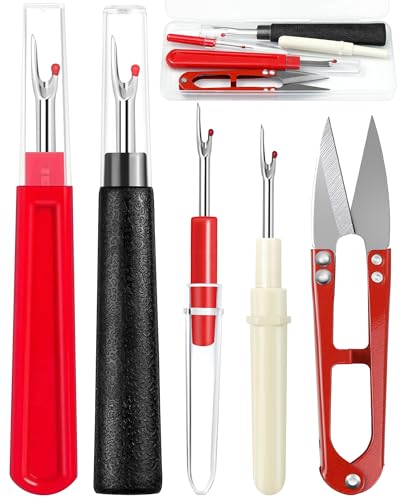Ever thought about turning your creative ideas into reality with sewing? Whether you’re completely new or have dabbled a bit, finding the right online course can make all the difference. With so many options out there, it’s easier than ever to learn at your own pace from the comfort of your home.
Best Online Sewing Courses for Beginners
Explore top online sewing courses designed to help you start your sewing journey with ease. These programs offer step-by-step instructions and resources to build your skills from the comfort of your home.
Craftsy’s Beginner Sewing Classes
Craftsy provides comprehensive beginner sewing classes that cover essential techniques and projects. Each course includes video tutorials, printable patterns, and access to a supportive community. You can learn at your own pace, with classes ranging from basic stitching to simple garment construction.
Udemy’s Sewing for Beginners
Udemy offers a variety of sewing for beginners courses tailored to different skill levels. Courses feature lifetime access to video lessons, practical assignments, and quizzes to reinforce your learning. With affordable pricing and frequent discounts, Udemy makes it easy to start sewing without breaking the bank.
Skillshare’s Intro to Sewing
Skillshare’s Intro to Sewing class introduces fundamental sewing skills through engaging video lessons and hands-on projects. The course emphasizes practical applications, helping you create your own garments and accessories. Additionally, Skillshare’s community forums allow you to connect with fellow learners and receive feedback on your progress.
What to Look for in an Online Sewing Course
Choosing the right online sewing course ensures you build a strong foundation and enjoy your learning journey. Consider these key factors to find a course that fits your needs.
Comprehensive Curriculum
A well-structured curriculum covers essential sewing techniques, from basic stitches to advanced projects. Look for courses that offer:
- Step-by-step tutorials: Clear instructions for each technique.
- Project-based learning: Hands-on assignments to apply skills.
- Supplementary materials: Access to patterns, videos, and resources.
Experienced Instructors
Qualified instructors enhance your learning experience with expertise and support. Ensure the course includes:
- Professional background: Instructors with proven sewing experience.
- Interactive sessions: Opportunities for live Q&A or feedback.
- Student support: Access to forums or communities for assistance.
Flexible Scheduling
- On-demand access: Learn anytime, anywhere with lifetime course access.
- Modular lessons: Progress through sections based on your availability.
- Self-paced assignments: Complete tasks when it suits your schedule.
Benefits of Taking an Online Sewing Course
Taking an online sewing course offers numerous advantages that enhance your learning experience and skill development.
Flexibility and Convenience
Online courses let you set your own schedule, fitting lessons into your daily routine. You access materials anytime, allowing you to learn at your own pace without the constraints of fixed class times.
Wide Range of Resources
Courses provide extensive resources, including video tutorials, downloadable patterns, and step-by-step guides. These tools help you understand techniques and complete projects efficiently.
Cost-Effective Learning
Online sewing courses often cost less than in-person classes. You save on commuting and material fees, making quality education more accessible and budget-friendly.
Access to Expert Instructors
Learn from experienced professionals who offer valuable insights and personalized feedback. Instructors guide you through complex techniques and help you overcome challenges.
Community Support
Join a community of fellow learners who share your passion. Engage in forums, participate in group projects, and gain inspiration from others’ work, fostering a supportive learning environment.

Ability to Revisit Material
Courses allow you to revisit lessons as needed. If you encounter difficulties, you can review previous modules to reinforce your understanding and master skills effectively.
Diverse Course Options
Choose from a variety of courses tailored to different interests and skill levels. Whether you’re interested in basic sewing, embroidery, or advanced techniques, there’s a course that fits your goals.
Practical Hands-On Experience
Many online courses include practical assignments and projects. Applying what you learn through real-world projects helps solidify your skills and builds your portfolio.
Enhanced Skill Development
Structured learning paths ensure you build a strong foundation and advance your abilities systematically. Courses cover essential techniques and introduce new skills to expand your sewing repertoire.
Networking Opportunities
Connect with instructors and peers, opening doors to collaborations and mentorship. Building a network within the sewing community can lead to new opportunities and continuous learning.
| Benefit | Description |
|---|---|
| Flexibility | Learn anytime, fitting lessons into your schedule |
| Wide Range of Resources | Access to videos, patterns, and step-by-step guides |
| Cost-Effective | Save on class fees and commuting expenses |
| Expert Instructors | Guidance from experienced sewing professionals |
| Community Support | Engage with fellow learners for inspiration and assistance |
| Revisit Material | Review lessons as needed to reinforce understanding |
| Diverse Course Options | Choose courses tailored to various interests and skill levels |
| Practical Experience | Apply skills through hands-on assignments and projects |
| Skill Development | Build a strong foundation and advance systematically |
| Networking Opportunities | Connect with instructors and peers for collaborations and mentorship |
How to Choose the Right Course for Your Needs
« Unlock Stunning Sewing Projects with Our Ultimate Guide to Matching Fabric
Sewing Reusable Produce Bags: The Ultimate Green Guide for Eco-Friendly Living »
Selecting the ideal online sewing course involves evaluating several key factors to match your goals and learning style.
Curriculum and Content
Ensure the course offers a comprehensive curriculum with step-by-step tutorials and project-based learning. Look for courses that cover essential techniques such as stitching, pattern making, and fabric selection. For example, a course might include modules on basic garment construction, advanced embroidery, and finishing techniques.
Instructor Expertise
Choose a course led by experienced instructors with professional backgrounds in sewing and crafting. Verify instructors’ credentials and their ability to provide interactive sessions. Courses featuring instructors who offer personalized feedback and live Q&A sessions enhance your learning experience.
Flexibility and Access
Opt for courses with flexible scheduling and on-demand access. This allows you to learn at your own pace and revisit materials as needed. For instance, platforms like Udemy offer lifetime access to course content, enabling you to balance learning with other commitments.
Cost and Value
Compare the cost of courses relative to the value they provide. Consider factors such as access to materials, additional resources, and support services. Look for courses that offer free trials or money-back guarantees to assess their suitability without financial risk.

Resources and Support
Evaluate the availability of resources like video tutorials, downloadable patterns, and community forums. Courses that provide extensive resources support your learning and project completion. Additionally, robust community support allows you to engage with peers and instructors for guidance and inspiration.
Course Structure and Progression
Assess the course structure to ensure it promotes systematic skill development. Courses should have clear learning paths with milestones and assessments to track your progress. Structured learning helps build a strong foundation and prepares you for more advanced projects.
Reviews and Reputation
Research reviews and reputation of the course and its instructors. Positive feedback from past learners indicates a course’s effectiveness and reliability. Look for testimonials and ratings on platforms like Craftsy, Udemy, and Skillshare to make an informed decision.
Technical Requirements
Verify the technical requirements needed to participate in the course. Ensure you have access to necessary tools, software, and a reliable internet connection. Courses that clearly outline their technical needs help you prepare and avoid interruptions in your learning process.
Certification and Recognition
Determine if the course offers certifications or credentials upon completion. Recognized certifications can enhance your resume and demonstrate your skills to potential employers or clients. Courses providing certificates add value to your learning investment.

Personalized Learning Paths
Select courses that offer personalized learning paths tailored to your skill level and interests. Personalized courses adapt to your progress and focus on areas where you seek improvement, ensuring a customized and effective learning experience.
Interactive Elements
Choose courses with interactive elements such as assignments, quizzes, and live workshops. Interactive components reinforce learning and allow you to apply techniques in real-time. Engaging with practical tasks solidifies your understanding and skills.
By carefully considering these factors, you can select the online sewing course that best fits your needs and supports your journey into the world of sewing.
Conclusion
Getting started with sewing online is easier than ever. You have a variety of courses to choose from that fit your schedule and learning style. Embrace the journey and let your creativity flourish. With the right course you’ll gain the skills and confidence to create beautiful projects from the comfort of your home. Happy sewing!


















